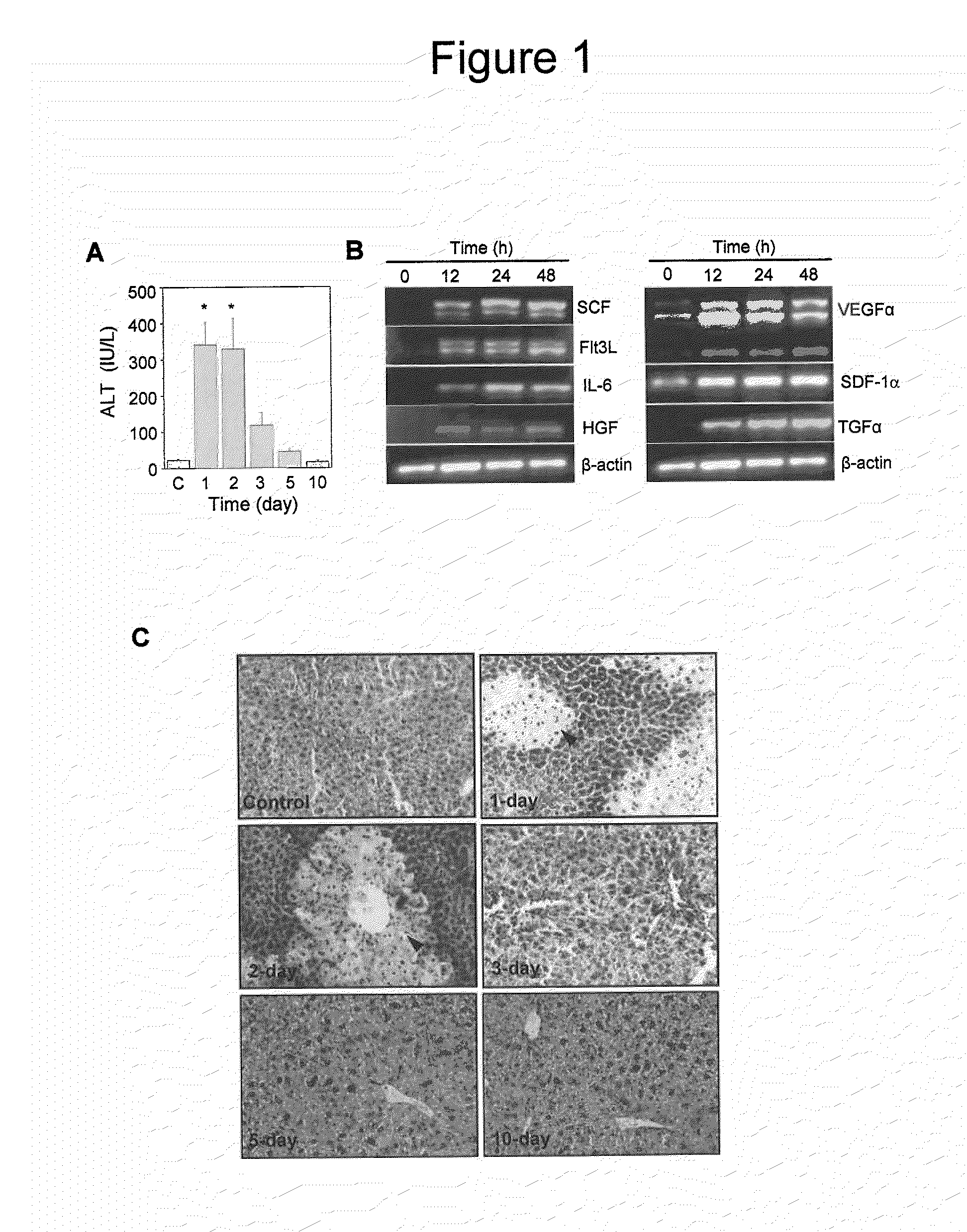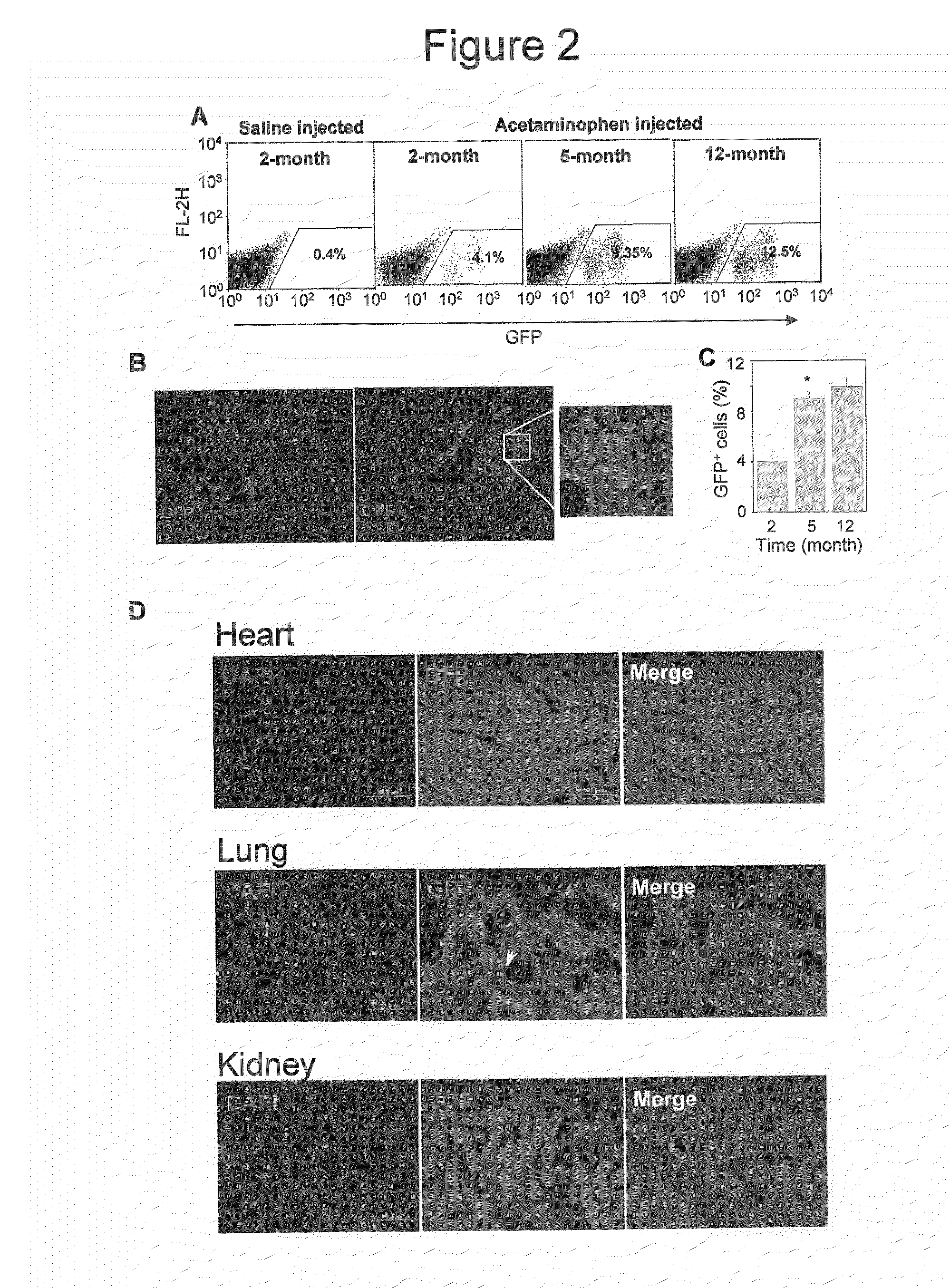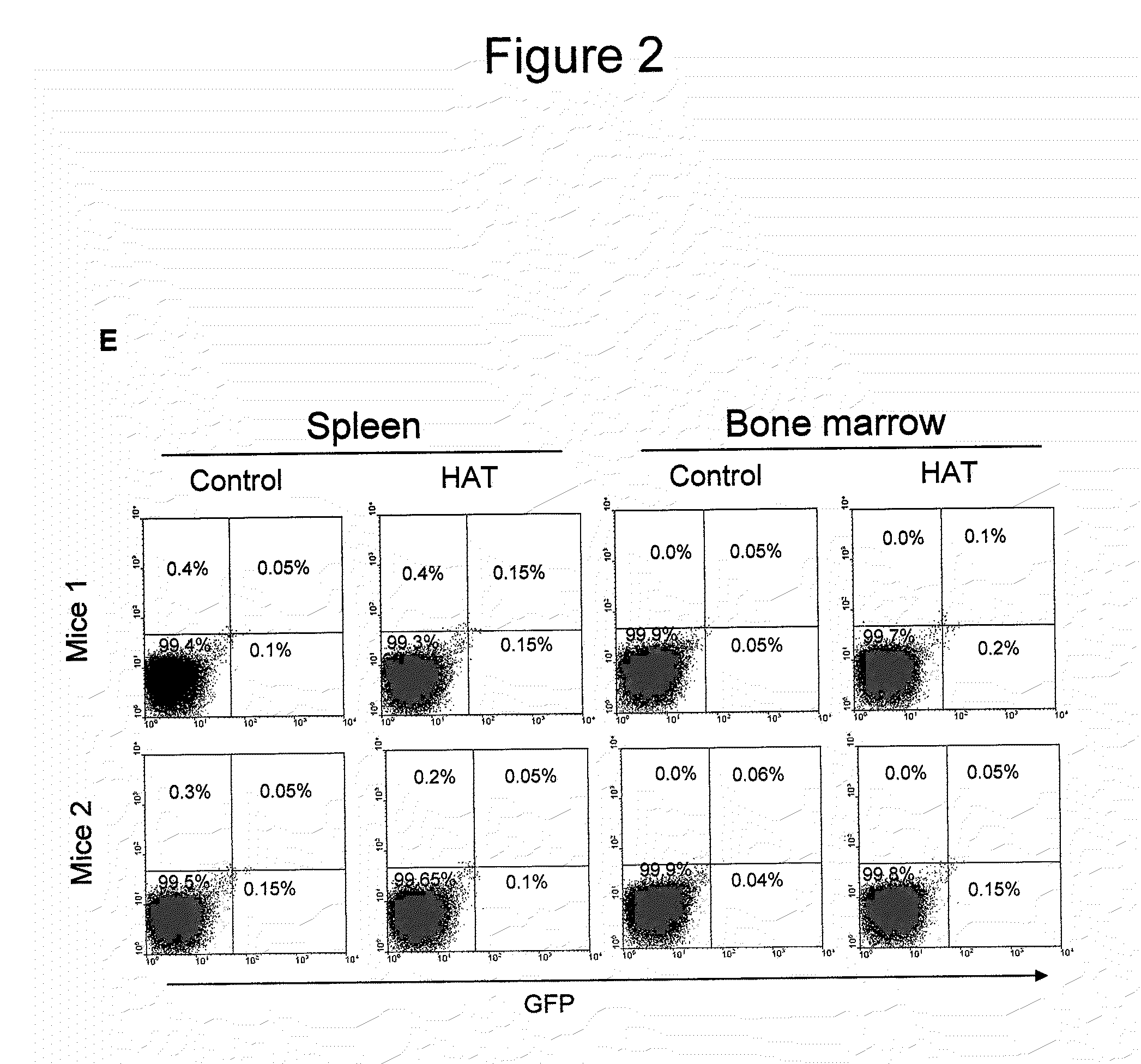Method for the therapeutic correction of hemophilia a by transplanting bone marrow cells
a bone marrow cell and hemophilia technology, applied in the field of hemophilia a therapeutic correction by transplanting bone marrow cells, can solve the problems of spontaneous bleeding in various parts of the body
- Summary
- Abstract
- Description
- Claims
- Application Information
AI Technical Summary
Benefits of technology
Problems solved by technology
Method used
Image
Examples
example 1
[0104]The techniques of this example were used in the Examples described below.
[0105]Animals: Six to eight-weeks old male HA mice [B6; 129S4_FstmlKaz / J] and eGFP expressing [C57BL / 6-Tg(UBC-GFP)30Scha / J] female mice were used in this investigation. Mice were obtained from The Jackson Laboratories (Bar Harbor, Me.) and maintained in the National Institute of Immunology's experimental animal facility. Mice were kept in an isolator, fed with autoclaved acidified water and irradiated food ad libitum. All experiments were conducted as per procedures approved by the Institutional Animal Ethics Committee.
[0106]Acute liver injury model: Acute liver injury was induced by the intraperitoneal injection of acetaminophen (500 mg / kg b.w.) in male HA mice. Animals were sacrificed at days 1, 2, or 3 after the administration of acetaminophen, and serum samples were collected for the analysis of alanine aminotransferase (ALT) level. The liver was dissected and fixed in 10% buffered formalin. Five-micr...
example 2
Acetaminophen-Induced Acute Liver Injury in HA Mice
[0125]Acute liver injury was induced by the intraperitoneal injection of acetaminophen into HA mice as described above.
[0126]FIGS. 1A, 1B and 1C show the effect of the acetaminophen treatment on liver function and cytokine gene expression. Acetaminophen was administered to male HA mice by an intraperitonial injection. The control mice received saline. At each time interval, the serum ALT level was estimated. Control mice ‘C’ received normal saline (n=6 for each group, *p<0.001) and these results are shown in FIG. 1 A. A significant increase in the serum ALT level was observed within one day of the acetaminophen injection compared to the control animals. The ALT level was high up to the second day of treatment, after that it slowly normalized with time.
[0127]The effect of the acetaminophen on the liver pathology was examined. Representative H&E stained sections of control and acetaminophen treated liver at different times are shown (...
PUM
 Login to View More
Login to View More Abstract
Description
Claims
Application Information
 Login to View More
Login to View More - R&D
- Intellectual Property
- Life Sciences
- Materials
- Tech Scout
- Unparalleled Data Quality
- Higher Quality Content
- 60% Fewer Hallucinations
Browse by: Latest US Patents, China's latest patents, Technical Efficacy Thesaurus, Application Domain, Technology Topic, Popular Technical Reports.
© 2025 PatSnap. All rights reserved.Legal|Privacy policy|Modern Slavery Act Transparency Statement|Sitemap|About US| Contact US: help@patsnap.com



